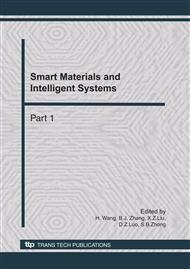[1]
Xu Xiangyang, Ge Jike: Research on Personal Credit Scoring Model based on Clustering. Financial electronics(2006), pp.119229-231.
Google Scholar
[2]
Kittler, J., Hatef, M., Duin, R. P. W., & Matas, J.: On combining classifiers. IEEE Transaction on Pattern Analysis and Machine Intelligence, Vol. 20(1998), pp.226-239.
DOI: 10.1109/34.667881
Google Scholar
[3]
Bhekisipho Twala, Multiple classifier application to credit risk assessment. Expert Systems with Applications, Vol. 37 (2010) , pp.3326-3336.
DOI: 10.1016/j.eswa.2009.10.018
Google Scholar
[4]
Hu Jiuqing: System Engineering, Beijing: China Statistical Publishing House (1999).
Google Scholar
[5]
Hua Bei: Research on credit card approval models based on data mining technology. Computer Engineering and Design(2008), pp.2989-2991.
Google Scholar
[6]
EVERITT B. Cluster analysis. New York: Halsted-Wiley (1974).
Google Scholar
[7]
Guha S, Rastogi R, Shim K. 1998. Cure: an efficient clustering method for large databases. In Proc(1998) , pp.73-84.
DOI: 10.1145/276305.276312
Google Scholar
[8]
Li Jiajun, Li Yaya. The improvement of the customer credit rating Based on subjective. Financial forum, Vol. 3 (2008), pp.26-30.
Google Scholar
[9]
Asuncion, A. & Newman, D.J. (2007). UCI Machine Learning Repository. Irvine, CA: University of California, School of Information and Computer Science.
Google Scholar
[10]
Abdou, H., Pointon, J., & Elmasry, A. Neural nets versus conventional techniques in credit scoring in Egyptian banking. Expert Systems and Applications, Vol. 35(2008), pp.1275-1292.
DOI: 10.1016/j.eswa.2007.08.030
Google Scholar
[11]
Khashman, A. Neural networks for credit risk evaluation: Investigation of different neural models and learning schemes. Expert Systems with Applications(2010).
DOI: 10.1016/j.eswa.2010.02.101
Google Scholar


